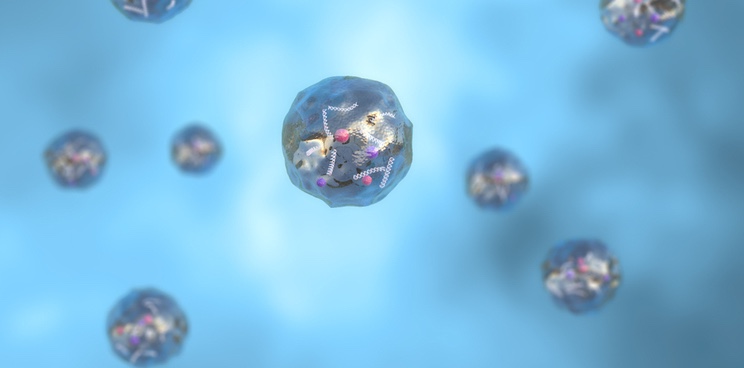Newsletter Signup - Under Article / In Page
"*" indicates required fields
A Swiss research group has developed tiny plastic particles that could carry gene therapies to the center of the cell with less risk of getting attacked by the immune system than conventional gene therapies.
The majority of gene therapies in use today are delivered to the DNA of target cells using viral vectors. While efficient at their job, viral vectors can risk triggering the immune system to destroy them. This can lead to the therapy becoming ineffective.
In a study published in the journal PNAS, scientists at the University of Basel developed tiny polymer ‘nanocontainers’ around 60 nanometers long that could solve this issue. The nanocontainers are designed to carry their gene therapy payload into the cell nucleus — where the genomic DNA is stored. They fool the cell’s regulatory mechanisms into letting them in because they have cell proteins called ‘nuclear localization signals’ attached to their surface, making them seem like regular vesicles on their way to the nucleus.
“This is precision medicine at the nanoscale,” said Roderick Lim, biophysics Professor at the University of Basel, and one of the lead authors of the study.
While viral vectors can also deliver gene therapies to the nucleus, these nanocontainers are designed to avoid activating the immune system, making the therapy more effective.
There are several types of nanocontainers in development for drug delivery, and many groups are working to deliver their own nanocontainers to the cell nucleus. However, according to Lim, the nanocontainers in this study are the first to meet multiple criteria at once for delivering gene therapies to the nucleus, including being small enough, not being toxic to cells, being stable, and being equipped with nuclear localization signals.
In addition to gene therapies, the researchers also hope to use this technology to deliver other types of drugs into the nucleus such as chemotherapy. Making sure that chemotherapy drugs reach the nucleus without exposure to other parts of the cell could cause fewer side effects.
“Different drugs target different locations in the cell,” Lim told me. “Hence, it would be beneficial to deliver the right drug to the precise location in each individual cell.”
The researchers declined to comment on their plans for commercializing the technology. The idea of viral vector alternatives in gene therapies is being explored by a number of companies, with one of the most advanced being the French Eyevensys. This company recently raised a Series B round to fund the phase II trial of a gene therapy for the inflammatory eye condition chronic non-infectious uveitis, which is delivered using electricity into a muscle in the eye.
Images from Shutterstock






